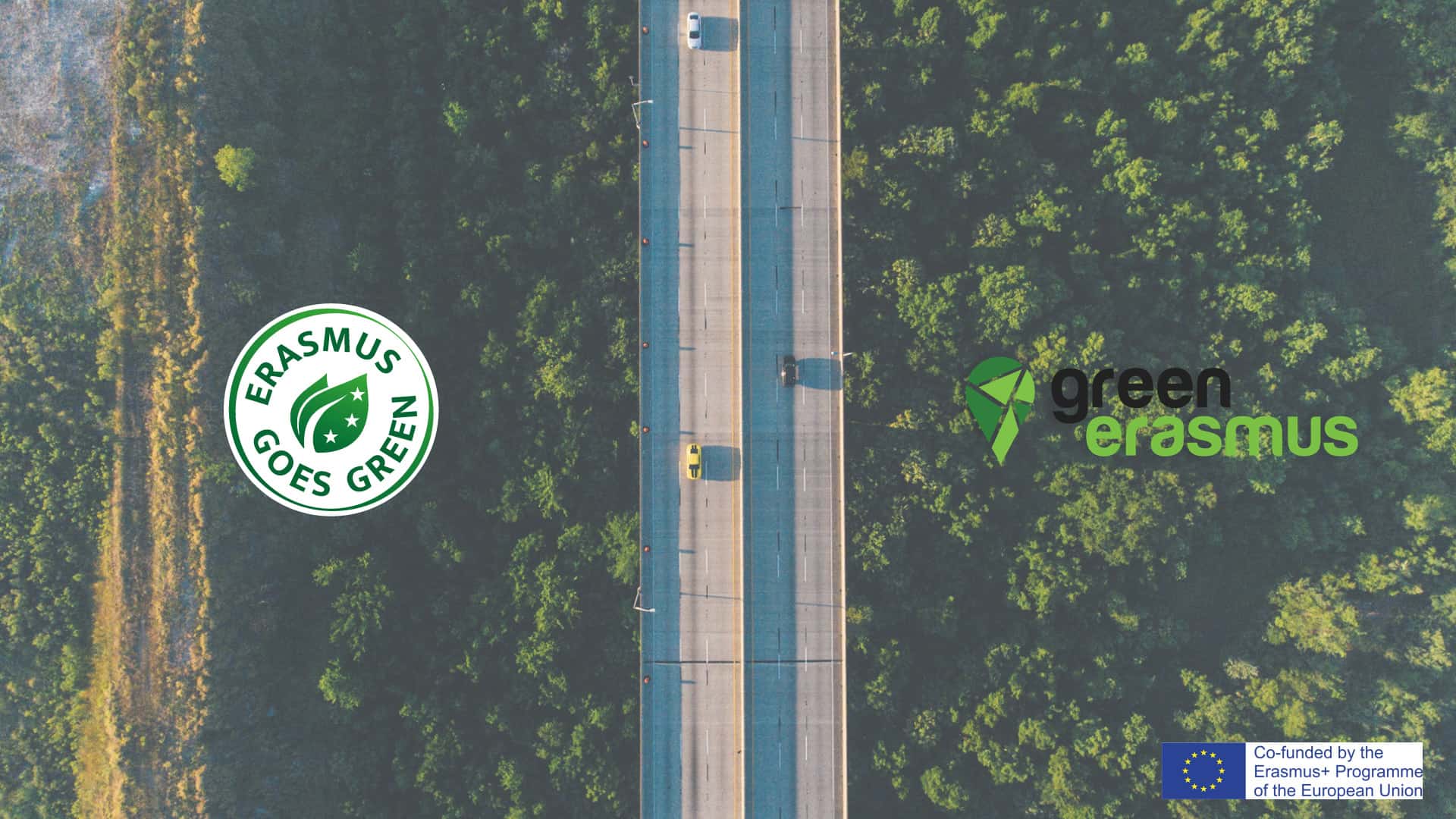A step-by-step guide for HEIs to include sustainability in their internationalisation procedures
Preventing climate change is one of the key priorities of the European Union (EU). Nonetheless, the Erasmus+, one of the main EU instruments to support growth, jobs, equity and social inclusion, has been slow to include green actions in its own functioning. Moreover, the success of the programme over the past three decades has prompted the EU to nearly double the budget to EUR 26.2 billion for the new programming period 2021-2027. Indeed, the Erasmus+ programme is set to be larger, more inclusive and more ambitious. It can also be a lot greener.
In this article, we have rounded up the main results and resources of the Erasmus Goes Green and the Green Erasmus projects with a twofold purpose: to raise awareness on the environmental impact of the European higher education sector; and to empower students, Higher Education Institutions (HEIs) and decision makers to be agents of change, pushing for improvements on environmental sustainability.
Sustainability and mobility: improving student and staff mobility practices
Are you interested in integrating environmental sustainability into the mobility preparation procedures, but lack time in a busy office with different priorities? We’ve got you covered. Below are some resources that you can use right away to include sustainability in the mobility practices:
- CO2 Visualisation tool: understanding the transport-related carbon footprint of mobility might be the first step to change habits and explore alternatives to minimise it. Developed by the Erasmus Goes Green consortium, the CO2 Visualisation tool will help you become more aware of the carbon footprint of mobility.
- Erasmus Goes Green Handbook for students: including key facts on transport-related CO2 emissions and guidelines on the use and advantages of the CO2 visualisation tool, the handbook offers concrete support when planning a more sustainable journey. It also contains examples and feedback from students who travelled sustainably to their mobility destination. You can add it to the documentation shared on your website or disseminate it among your students before the mobility period.
- Green Erasmus online Portal: another easy way to incentivise greener mobility practices is to include this openly accessible portal in the materials shared before the Erasmus+ mobility. Equipped with educational content, two games and a quiz, your students will discover the necessary efforts to undertake before, during and after the mobility abroad in order to make it more sustainable.
- “Increase support for green travel in Erasmus+” petition: although the green top-up has been a welcomed addition to the Erasmus+ programme, it is clearly not enough to close the considerable price gap between airplanes and low-emission modes of transport. The Green Erasmus petition advocates for an increase in the green top-up in order to cover the additional subsistence costs and/or accommodation needs for a greener round trip.
Sustainability and international cooperation: enabling greener collaboration
Embracing transnational cooperation and connecting people and institutions should not be renounced due to environmental concerns. On the contrary, upholding the principle of sustainability can lead to more conscientious and environmentally friendly partnerships.
The Erasmus Goes Green Guidelines for HEIs incorporates feasible instructions and suggestions not only to promote but also carry out greener interactions, including projects, conferences and trainings between institutions, with a focus on more sustainable means of transportation.
Sustainability and strategic planning: institutionalising environmental sustainability
In order to maximise the impact of your efforts and encourage greener mobilities, the following recommendations function as a guide to better regulate and standardise your practice:
- Erasmus Goes Green Policy recommendations: a list of comprehensive proposals to render the management of the Erasmus+ programme more sustainable across its three key actions. Through this detailed action framework you can build on existing initiatives and consider a collaborative approach to foster an institutional transformation towards a greener Erasmus+.
- Measures to reduce the transport-related carbon footprint: complementary to the above-mentioned resources, this document, released by the Erasmus Goes Green consortium, puts forward practical incentives for carbon reduction and carbon offsetting on an individual, institutional, national and European level.
By increasing environmental awareness, the two projects aspire to transform Erasmus+ stakeholders into multipliers, hence bringing about a systemic positive change at the local, national and European level. The active engagement of students, staff, HEIs and policymakers in the field of higher education for more sustainable internationalisation will not only help the EU accomplish its ambition of becoming carbon neutral by 2050, but also show that sustainable transformation at a large scale is possible.
Cover photo by Lance Asper on Unsplash

